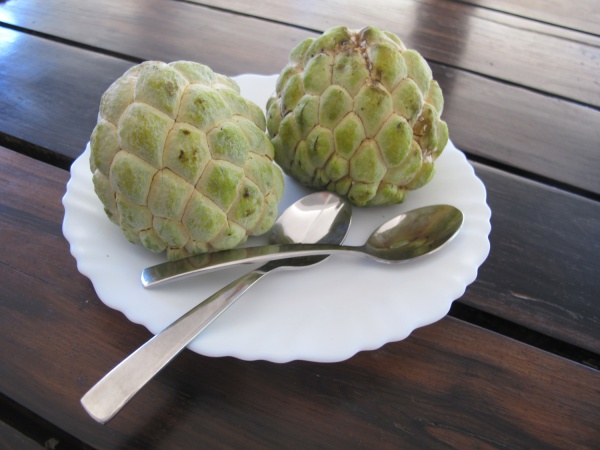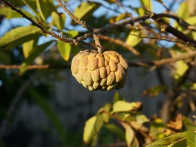Difference between revisions of "Custard apple"
CampMaster (talk | contribs) (Undo revision 19705 by CampMaster (Talk)) |
CampMaster (talk | contribs) |
||
| Line 16: | Line 16: | ||
A custard apple is high in energy and rich in vitamin C, thiamine, potassium and magnesium. Although the fruit has a high sugar content, the glycemic index is low. | A custard apple is high in energy and rich in vitamin C, thiamine, potassium and magnesium. Although the fruit has a high sugar content, the glycemic index is low. | ||
| − | Other names for custard apple are ''sugar apple'' in English, ''pocanelle'' in French and ''[[konikony]]'' or ''voanjato'' in Malagasy. | + | Other names for custard apple are ''sugar apple'' in English, ''pocanelle'' in French and ''[[konikony]]'' or ''voanjato'' or ''[[voazato]]' in Malagasy, especially in the northern part of the island. |
Latest revision as of 13:49, 21 July 2022
The custard apple is surely one of the most delicious fruits found in Madagascar. Once tried, the fruit is extremely addictive and becomes hard to resist.

| ||

|

|

|
The bumpy appearance of the fruit does not give away what for a treasure hides inside. The size of a custard apple varies from a small apple to the size of a large grapefruit. A ripe fruit is light green, turning yellow or sometimes even brownish. An almost too ripe fruit will break apart when handled, but can still be eaten.
For consumption the custard apple is best sliced into half and eaten with a spoon. The highly nutritious creamy-white pulp is soft, sometimes wobbly, and extremely sweet. Whilst eating one can feel the fruit sugar crystals between the teeth. There are quite a few black seeds in the fruit flesh, which cannot be eaten. Sorting the seeds out with a spoon or tongue can be a sticky matter but is definitely worth the effort!
A custard apple is high in energy and rich in vitamin C, thiamine, potassium and magnesium. Although the fruit has a high sugar content, the glycemic index is low.
Other names for custard apple are sugar apple in English, pocanelle in French and konikony or voanjato or voazato' in Malagasy, especially in the northern part of the island.